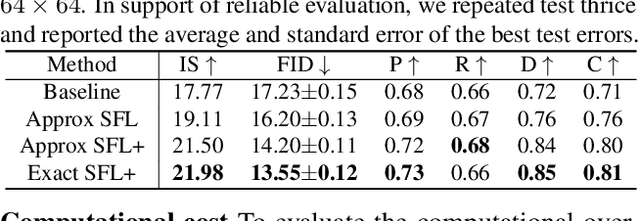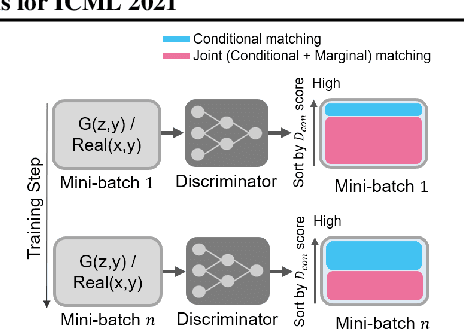Woo-Jin Song
Mitigating Memorization in Sample Selection for Learning with Noisy Labels
Jul 08, 2021



Abstract:Because deep learning is vulnerable to noisy labels, sample selection techniques, which train networks with only clean labeled data, have attracted a great attention. However, if the labels are dominantly corrupted by few classes, these noisy samples are called dominant-noisy-labeled samples, the network also learns dominant-noisy-labeled samples rapidly via content-aware optimization. In this study, we propose a compelling criteria to penalize dominant-noisy-labeled samples intensively through class-wise penalty labels. By averaging prediction confidences for the each observed label, we obtain suitable penalty labels that have high values if the labels are largely corrupted by some classes. Experiments were performed using benchmarks (CIFAR-10, CIFAR-100, Tiny-ImageNet) and real-world datasets (ANIMAL-10N, Clothing1M) to evaluate the proposed criteria in various scenarios with different noise rates. Using the proposed sample selection, the learning process of the network becomes significantly robust to noisy labels compared to existing methods in several noise types.
Selective Focusing Learning in Conditional GANs
Jul 08, 2021



Abstract:Conditional generative adversarial networks (cGANs) have demonstrated remarkable success due to their class-wise controllability and superior quality for complex generation tasks. Typical cGANs solve the joint distribution matching problem by decomposing two easier sub-problems: marginal matching and conditional matching. From our toy experiments, we found that it is the best to apply only conditional matching to certain samples due to the content-aware optimization of the discriminator. This paper proposes a simple (a few lines of code) but effective training methodology, selective focusing learning, which enforces the discriminator and generator to learn easy samples of each class rapidly while maintaining diversity. Our key idea is to selectively apply conditional and joint matching for the data in each mini-batch. We conducted experiments on recent cGAN variants in ImageNet (64x64 and 128x128), CIFAR-10, and CIFAR-100 datasets, and improved the performance significantly (up to 35.18% in terms of FID) without sacrificing diversity.
 Add to Chrome
Add to Chrome Add to Firefox
Add to Firefox Add to Edge
Add to Edge